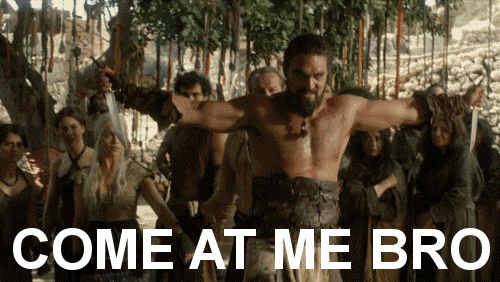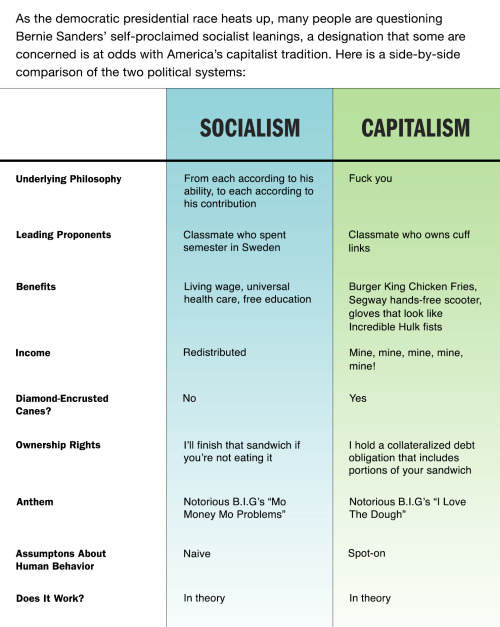Body language is one of the most important aspects of attraction, but it’s one that we frequently end up neglecting. People continually underestimate the power of non-verbal communication by focusing strictly on surface aspects. Non-verbal communication isn’t just about making sure we’re not inadvertently telling people to go away or trying to read people’s minds.
No, the strength in body language and non-verbal communication is in how much it controls whether or not people are attracted to us. Most people are utterly unaware of the messages that they’re sending out or the impact that they have on others; it’s like having a conversation with a Markov chat bot tied to the horse_ebooks Twitter account. You might get the right message across by accident but half the time you’re sending out more nonsensical word salad than a Freshman English major who just discovered Allan Ginsberg.

“Hey, how’s it going?”
“Crash the social moaning matrix.”
“You come here often?”
“Tax returns”
If, on the other hand, you’re aware of just what messages you’re sending, then you’re able to control and direct the conversation… and even affect how people feel about you. There are surprisingly simple body language tricks that can make the difference between being forgettable and having a magnetic connection. Despite what many of us think, our brains are very bad at understanding why we feel the way we do. More often than not, our brains are just feeling the sensations given to us by our bodies and rationalize the reasons for feeling that way after the fact. When you’re conscious of this process, you can actually use body language to increase attraction and rapport. Keep this in mind; we’ll be returning to this idea a few times.
Assume That They Already Like You To Help Them Like You
This first trick is part of an ancient and sacred art that I like to call “Getting The Hell Out of Your Own Way.”
One mistake that people make all the time is treating meeting new people as though it were some hellish challenge that can only be overcome by passing several charisma checks, finding the Unholy Grail and answering the Riddles Three.

“So all I really need to do is get twelve dozen rat asses to grind my fraction rating to ‘friend’?”
Now, in fairness, humans have survived as long as we have because we’re a communal species. We form social groups on the macro and micro level and we prioritize the well-being of our “tribe” because we know it helps us in the long run. As a result, we’re always wary around people who are from outside of our “tribe”, because we’re on the look out for freeloaders who’ll weaken our group by taking from it without giving in return. But at same time, most people are willing to give folks a chance and assume the best, provided they’re sending the right kinds of signals. People who come in defensively, or acting like they have to fight their way up from “pre-rejected”, are naturally off-putting; everything about their body language reads as “off” or “up to something”.
Assuming that you’re already friends, on the other hand, forces you to relax. We naturally behave differently around people we’re comfortable with. We aren’t as tense, our body language is more open, our way of speaking is warmer and friendlier… and people almost instinctively respond to that warmth. It becomes a self-fulfilling prophecy: believe that they like you and they will like you.
Anticipating that baseline of friendliness and acceptance is what helps set up this next trick…
Mirroring People Increases Your Charisma
One of the most important parts of attraction – and one that’s frequently left unaddressed – is feeling like the other person understands you on a deep and meaningful level. There’s something unbelievably powerful when meeting somebody who just gets you, who’s on the same wavelength. This is one of the reasons why it’s important to emphasize commonalities with people you’re interested in; the more we feel like the other person “gets” us, the more we feel connected to them. They’re showing that they’re similar to us instead of putting up weird objections and expecting us to crave their approval.

Not sure if negging or just an asshole…
But while it’s good to find “me too!” moments in conversation, talk is actually a crude and inefficient way of communicating that sense of “we’re the same”. It’s our body language that does most of the heavy lifting. One of the quickest and subtlest way of creating that sense of intimate familiarity is to mirror their body language.
Two people who are attracted to one another end up in synch with one another. They pick up on one another’s mannerisms – perhaps adopting similar speech patterns or turns of phrasing or performing similar activities like taking a drink at the same time. It’s normally an unconscious process, but you can actually trigger it deliberately by mirroring the other person’s body language and positioning. So when you’re talking to someone you’re interested in or on a first date with, you want to subtly match their movements.
Notice how very carefully I said subtly? You’re not doing everything they’re doing, you’re simply matching the little things that they do. If she’s shifted her weight to lean against a wall, then lean up against it as well. If she gestures with her hands when she talks, make similar gestures when you talk. If she leans forward and puts her elbows on the table while you’re talking, then you also lean forward. If she crosses her legs, then do the same. If they tap their foot in a certain rhythm, drum your fingers in the same pattern. Again: you’re not trying to play “Man in the Mirror”; you’re just consciously making very small adjustments that put the two of you in synch in ways that people do unconsciously all the time. Do the least amount possible to mirror the other person; you don’t need to be exact, just close.
It takes surprisingly little time to build rapport this way; if you do it right, you may end up making someone feel like they’ve known you forever even though you met five minutes ago.
Pace And Lead To Set The Tone
The next step is to not just synch with them but to lead. Just as skilled conversationalists can direct where a conversation goes, when you’re consciously in synch with someone, you can go from mirroring them to prompting them to mirror you. This is known as pacing and leading; first you get in synch, then as you build rapport with the person, you start to change your body language and they mirror you.
When you’ve been talking with someone and building that rapport and attraction for a few minutes – making sure to subtly mirror them – deliberately make a small change. Cross (or uncross) your legs, tilt your head, change the tone of your voice and watch how they respond; if they match your change, then you know that you’re in synch. At this point, you’re in a position to make small changes that can completely alter the tone of the interaction.

For example, five minutes ago, they were about to fight to the death…
For example: by using pacing and leading, you can defuse a tense situation. By mirroring someone who’s upset or feeling defensive1 and then slowly adopting calmer and more open body language, you can prompt people to relax and calm down. Similarly, you can build excitement by adopting more excited behavior – a higher voice pitch, bouncier body language, etc. If you’ve ever seen people getting excited at a sports bar, then you’ve seen this behavior in action; by performing the same gestures, they’re building an excitement feedback loop.

If Texas could harness the excitement feedback loop produced during football season, we’d solve our energy dependence…
Similarly, you can increase those feelings of rapport and attraction. There are a number of body language signs that are indicators of interest: pointing with the knees or feet, for example, or exposing the inside of the wrists or self touching on the neck or thigh. By pacing and leading the other person into adopting some of those indicators, you can increase that feeling of attraction; after all, the brain responds to the body’s behavior. Just as the act of smiling can make you feel happy and adopting a power pose can make you feel more confident, behaving in a manner that suggests attraction can increase attraction. This is part of why actors so often fall in love with one another on movie sets: they spend so much time pretending to be attracted to one another that they start to feel it for real.
Give (and Get) A Strategic Show Of Vulnerability
One of the things that we rarely think of is how much trust is necessary for attraction to exist. To have sex with someone – even just to make out with them – means making yourself incredibly vulnerable to them and vice versa. But that vulnerability is also part of what makes sex pleasurable; many erogenous zones on the human body are in a place where the skin is thinnest and the blood vessels are closest to the surface.
This is part of why so many indicators of interest are also signs of vulnerability. Displaying the inside of the wrist or drawing attention to the neck are both signs of trust – yes, they feel good when stroked or kissed, but by displaying them, you’re also opening yourself up to potential danger.

Assuming you actually LOOK at her neck…
This is part of why vampires are frequently eroticized in fiction; the focus on the neck (and the wrists and the inner thigh) corresponds not just with major blood vessels but also the erogenous zones.
So how do we use this knowledge to increase attraction and rapport? By demonstrating our own willingness to be vulnerable… which encourages reciprocity in others.
If you watch people in conversations, you can often tell who likes whom by simple tilts of the head. By keeping your head straight and your chin level or even slightly raised, you’re giving the impression of being stand-offish, possibly even aloof. Giving a slight tilt of the head, however, indicates that you’re paying attention and that you trust them by putting yourself in a vulnerable position. Similarly, angling your chin slightly down is a friendlier and more welcoming gesture; tilting your chin upwards gives the impression of looking down your nose at someone. These gestures are signs that you like someone and we instinctively like those who like us.

Just remember: if you’re doing the “baroo?” then you’re overdoing it.
Similarly, making gestures with your hands that tilt your palms up and outward are signs of trust and openness by exposing the wrists. In fact, many politicians shake hands with their palms tilted upward – a subtle touch that increases likability and rapport.
Another key – and one that comes back to how our bodies control our emotions – is to consider your core. Our core – our chest, abdomen and waist – is where we’re most vulnerable; exposing it with open body language is a sign of confidence. This is why so many people who intend to start fights (or bluff their way out of them) start off with a chest-thumping, open arms pose; they’re deliberately making themselves vulnerable to show they don’t consider the other person a threat.

But exposing your core is also a sign of attraction. Humans are goal-driven and tend to orient ourselves towards the things we’re interested in whether it’s someone we want to bang or we just want to hit the bar. Just as we tend to point our knees and feet at people we’re interested in, we also point our open core at them. Just as mimicking signs of interest can increase actual interest, arranging yourself so that the other person’s open core is pointed at you can increase rapport. As you present a slightly angled body to her, find an opportunity to move slightly so that she’s facing you directly. It’s a very small thing, but it adds up.
Give Good Face
When we talk about body language and attraction, we tend to focus on the torso and arms: the importance of posture, where to touch (and not touch) someone, etc. One of the most underestimated aspects of attractive body language is – oddly enough – the face. Most people tend to underestimate just how powerful facial expressions and eye contact can be when it comes to building attraction.
One of the first keys to using your face properly is to understand the value of a smile. Out of all primates, humans are the only species that smile at people they like; in almost every other species, a smile is a threat display. A smile is a shockingly versatile expression – it can indicate pleasure, happiness, ironic detachment, appeasement, or a sense of superiority.

Also an invitation to see how well your fist fits into their face.
A warm, genuine smile can be the difference between being a likable person and a disturbing creeper. Smiling when talking to someone you’re interested in is incredibly important. However, how you smile can make the difference between being pleasant and being sexy. Giving a smile immediately upon meeting someone is being pleasant but not necessarily exciting; it’s the sort of expression you might give anyone you meet. Instead, the next time you meet someone you’re attracted to, hold off on the automatic smile. Instead, wait just a second or two as you meet their gaze, then let the smile build and reach your eyes. It’s a very subtle difference, but it creates an increased feeling of pleasure and intimacy – the sense that this smile is just for them alone.
Eye contact is also incredibly important; after all, not meeting somebody’s eyes is frequently a sign of being dishonest or uninterested. However, strategic eye contact can be incredibly powerful. When you hear about somebody’s intense gaze or their bedroom eyes, they’re someone who knows how to use eye contact to build attraction. One of the simplest ways is to just hold eye contact with them for slightly longer than normal; not so long that you’re staring but longer than you would hold it when talking with a friend. Hold it, then break contact by slowly looking to the side, almost as though you were reluctant to look away.
Another trick – and one that takes practice to use effectively – is the triangle gaze. Look in the person’s eye (right or left, it doesn’t matter) for a beat longer than normal, then let your eyes glance down to their lips before returning your gaze to their other eye and give a smile. It’s a powerful technique to use on someone you’ve been flirting with and one that often leaves people feeling surprisingly flustered… in a good way. It’s a subtle, almost subliminal suggestion of being interested in kissing them and more, prompting all sorts of interesting thoughts.
(Incidentally, this works on people you’re actually in a relationship with as well as strangers; give it a try and see how they respond.)
Keep in mind: none of these body language techniques are mind control. You’re not “hypnotizing” anyone, nor are you manipulating somebody into feeling something that isn’t actually there. You’re consciously building on what’s already there. Most people aren’t aware of the messages that their body language sends to others. But by understanding and utilizing proper body language, you can increase attraction and rapport and take a ho-hum interaction and make it electric.

- In a way that doesn’t encourage them to escalate or lash out
The post 5 Body Language Tricks That Increase Attraction appeared first on Paging Dr. NerdLove.


![]()
![]()
![]()
![]()
![]()
![]()
![]()
![]()
![]()
![]()
![]()
![]()
![]()
![]()
![]()
![]()




















































